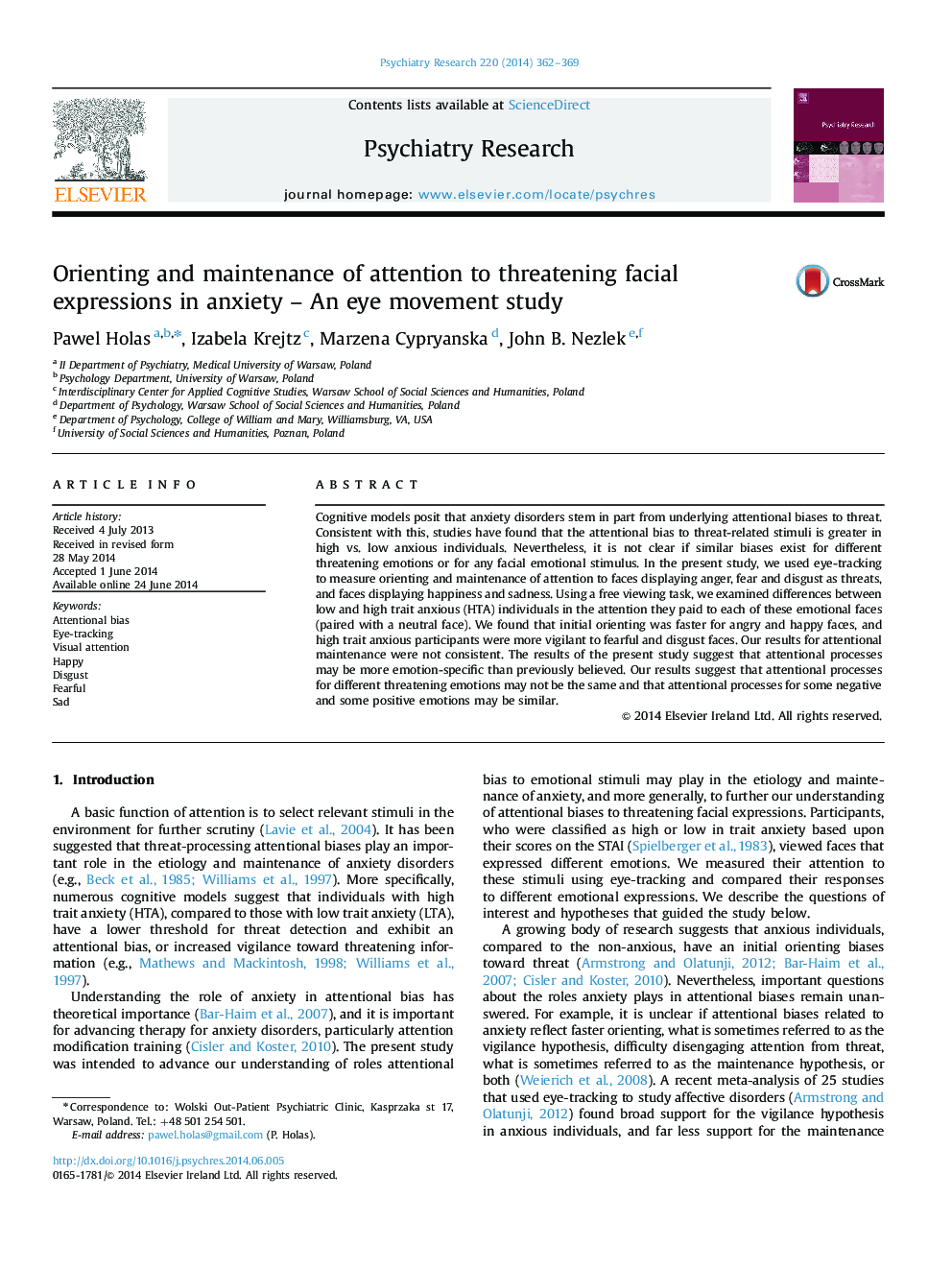| Article ID | Journal | Published Year | Pages | File Type |
|---|---|---|---|---|
| 6814899 | Psychiatry Research | 2014 | 8 Pages |
Abstract
Cognitive models posit that anxiety disorders stem in part from underlying attentional biases to threat. Consistent with this, studies have found that the attentional bias to threat-related stimuli is greater in high vs. low anxious individuals. Nevertheless, it is not clear if similar biases exist for different threatening emotions or for any facial emotional stimulus. In the present study, we used eye-tracking to measure orienting and maintenance of attention to faces displaying anger, fear and disgust as threats, and faces displaying happiness and sadness. Using a free viewing task, we examined differences between low and high trait anxious (HTA) individuals in the attention they paid to each of these emotional faces (paired with a neutral face). We found that initial orienting was faster for angry and happy faces, and high trait anxious participants were more vigilant to fearful and disgust faces. Our results for attentional maintenance were not consistent. The results of the present study suggest that attentional processes may be more emotion-specific than previously believed. Our results suggest that attentional processes for different threatening emotions may not be the same and that attentional processes for some negative and some positive emotions may be similar.
Related Topics
Life Sciences
Neuroscience
Biological Psychiatry
Authors
Pawel Holas, Izabela Krejtz, Marzena Cypryanska, John B. Nezlek,
